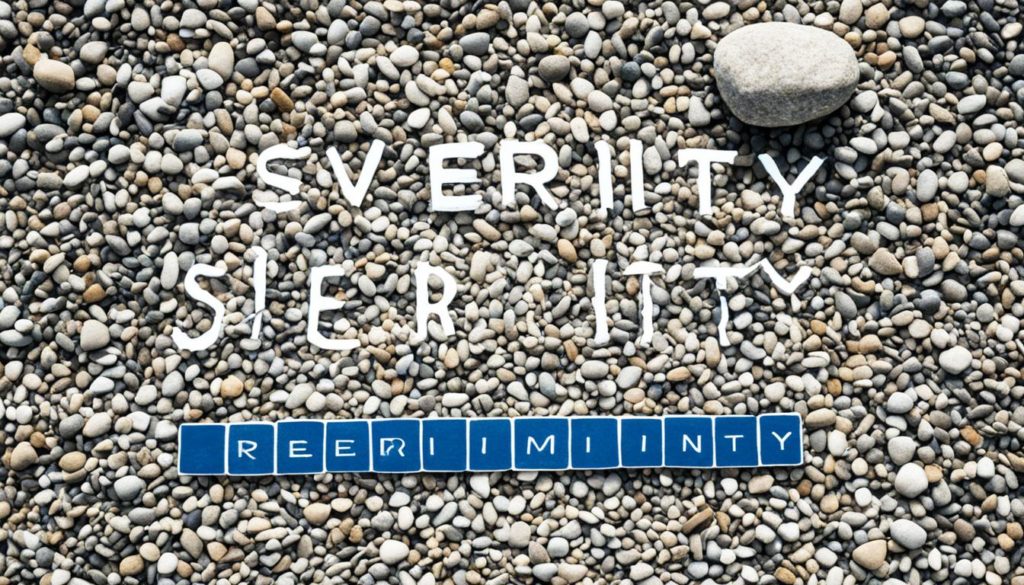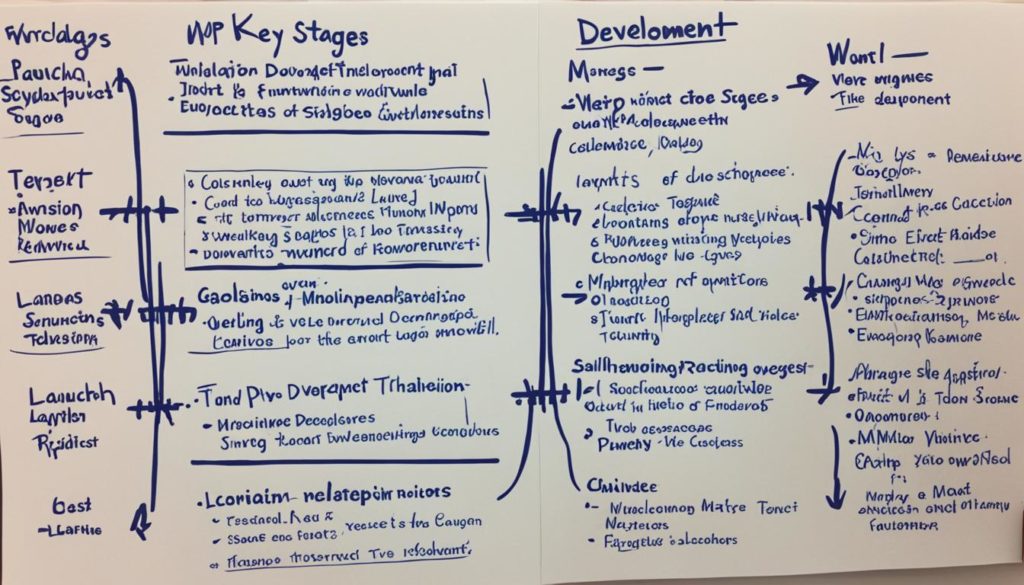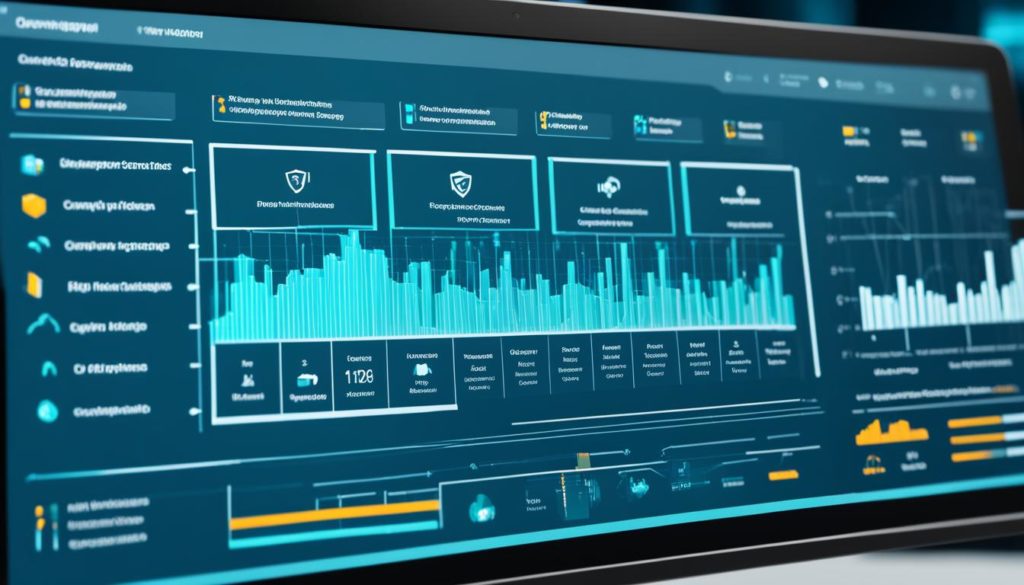
Did you know that 87% of firms see the value in keeping knowledge, but only 42% have a plan for it? This shows a big gap many companies face. But, using a strong Knowledge Management System (KMS) can change how your team works.
Our KMS is like a digital librarian, keeping and sharing your team’s knowledge well. It uses AI and machine learning to find information fast, saving up to 40% of time. With 5G, our system works quickly on all devices.
Platforms like Flowlu work well on all screens, making it easy for mobile users. This is great for industries like healthcare. By keeping all your info in one place, we help you work better together and learn more. Want to learn more about how our KMS can change your work? Let’s explore.
Key Takeaways
- 87% of companies value knowledge retention, but only 42% have formalized knowledge management plans.
- AI-powered technology enhances search capabilities, reducing information retrieval time by up to 40%.
- The KMS supports mobile accessibility, crucial for sectors like healthcare.
- Platforms like Flowlu adapt to various screen sizes, ensuring user-friendly navigation.
- Implementing a KMS can streamline workflows, boost collaboration, and foster continuous learning within organizations.
Understanding the Concept of Knowledge Management Systems
In today’s fast-paced business world, a knowledge management system is like a digital library. It gathers data from documents, employee files, and databases. Let’s explore why these systems are key in our workplaces.
Definition and Importance
A knowledge management system (KMS) helps store, share, and find organizational knowledge well. Employees often spend up to 20% of their time looking for information. This makes a good KMS very important.
These systems also help capture and share knowledge that’s hard to put into words. They make training new employees faster, cutting down onboarding time. With AI and machine learning, these systems get even better, acting as the brain of the organization.
Essential Components of Knowledge Management Systems
To work well, a knowledge management system needs several key parts. These include:
- AI-powered searches
- Intelligent content management system
- Collaborative spaces for peer knowledge sharing
- Insightful analytics
- Granular access controls
A good KMS uses AI to automate tasks and improve how content is shared. For example, a central knowledge base is key for smart guidance and self-service. These systems are vital for meeting critical information needs and choosing the right platform, like Flowlu, for your needs.
Here’s a quick look at the different parts and their roles:
| Component | Role |
|---|---|
| AI-powered Searches | Helps find information quickly and accurately |
| Intelligent Content Management System | Makes storing and accessing content easier |
| Collaborative Spaces | Helps share knowledge among colleagues |
| Insightful Analytics | Gives insights for ongoing improvement |
| Granular Access Controls | Makes sure the right people see the right info |
As businesses focus more on customer experience, having a good information retrieval system is crucial. Companies that use these elements well tend to do better than their competitors and grow more steadily.
The Benefits of Implementing a Knowledge Management System
A Knowledge Management System (KMS) brings many benefits to organizations. It helps keep knowledge safe, boosts innovation, and aids in making strategic decisions. With the right tools, like enterprise search software and a strong collaboration platform, a KMS makes sure employees can quickly find the information they need.
Enhanced Efficiency and Productivity
Using enterprise search software can greatly cut down the time spent looking for information. For example, Conagra has seen a big drop in search times with their KMS. This leads to a 40% increase in productivity for 74% of organizations.
Employees can then focus on important tasks instead of searching for information. This makes them more productive and efficient.
Improved Collaboration and Innovation
A KMS with a collaboration platform helps break down barriers and connects experts with those who need their knowledge. PennyMac has seen better customer service thanks to their KMS. It gives customer service agents quick access to important information.
This kind of system encourages open communication and sharing of knowledge. It leads to more innovation and better teamwork, making the organization stronger.
Retention of Expertise
A good KMS keeps important knowledge safe, even when employees leave. It collects different types of knowledge. This way, organizations can keep their knowledge and skills alive.
Such systems are key in keeping knowledge flowing. They make sure valuable insights and experiences are always available.
Fostering Continuous Learning
Having a KMS promotes a culture of learning and growth. It gives employees easy access to lots of information. This helps both new and experienced employees improve their skills.
It also integrates with learning management systems. This supports ongoing training and development. It keeps employees engaged and drives innovation.
The knowledge management industry is growing fast. It’s expected to reach $1.1 trillion by 2026. For more on the benefits of knowledge management, check out this article.
Here’s a table showing the main benefits of a KMS:
| Key Benefits | Description | Examples |
|---|---|---|
| Enhanced Efficiency | Increases employee productivity by reducing search times. | Conagra’s centralized KMS |
| Improved Collaboration | Facilitates open communication and knowledge sharing. | PennyMac’s knowledge access for service agents |
| Expertise Retention | Preserves organizational knowledge and expertise. | Capturing explicit, implicit, and tacit knowledge |
| Continuous Learning | Promotes ongoing professional development | Integration of learning management systems |
A KMS offers many benefits, from better productivity to more innovation. It’s a vital tool for any organization looking to succeed in today’s fast-paced world.
Setting Up an Effective Knowledge Management System
Creating a good knowledge management system (KMS) needs careful planning. Let’s look at the main steps to set up a strong KMS for your company.
Identifying Knowledge Needs
First, figure out what knowledge is key for your company. This means finding and recording all types of knowledge that matter to your work. Surveys and talking to team members can help find the most important knowledge areas.
About 75% of businesses make sharing knowledge a big part of their KMS. This shows how important it is.
Choosing the Right Platform
Finding the right platform is key. It should work well with your current work flow and have strong features like search and asset management. Confluence and GitBook are top choices, with ratings of 4.4/5 and 4.5/5, respectively.
Adding smart integration and customization helps the platform fit your company’s needs. Studies show 63% of organizations save time with a good KMS.
Encouraging Participation
Getting employees to join in is crucial for KMS success. Creating a culture of learning and teamwork helps share knowledge better. Using games and rewards can make it fun and rewarding.
Indeed, 60% of businesses want to boost innovation with user feedback and better plans through their KMS. Regular surveys to get feedback and improve the system are also smart.
To make a KMS work, identify key knowledge, pick the right platform, and encourage everyone to participate. For more tips on setting up a KMS, see this detailed guide.
Overcoming Challenges in Knowledge Management
Setting up a Knowledge Management System (KMS) is key to using an organization’s knowledge fully. But, several hurdles can pop up, affecting success. Tackling these issues helps the transition go smoothly and boosts KMS benefits.
Cultural Resistance
One big hurdle is cultural resistance in the workplace. Employees might resist new ways of working or not see the value right away. To overcome this, promoting teamwork and rewarding participation is vital. Through open talks, training, and celebrating employee efforts, we can lower resistance and get everyone involved.
Maintaining Updated Information
Keeping information in the KMS current is like caring for a garden. It’s essential to keep data fresh and relevant. Old or wrong info can harm decision-making and productivity. Companies should invest in keeping their knowledge bases up-to-date, using tools to make updates easier and more accurate.
Ensuring Data Security
Another big challenge is keeping data safe. Strong security is needed to protect sensitive info in the KMS. By using top-notch security, we can avoid data breaches and meet legal standards. Secure document management software helps keep information safe and builds trust in the system.
By tackling these challenges directly, we can make our knowledge management better. Encouraging active participation, keeping info current, and securing data are crucial. These steps help us get the most out of our Knowledge Management System.
Best Practices for Maximizing Your Knowledge Management System
Using a professional Knowledge Management System (KMS) can make your team 20-25% more productive. To get the most out of your KMS, it’s key to follow knowledge management best practices in your company.
-
Build a culture that encourages collaborative knowledge sharing. This is especially important with 58% of employees expected to work remotely by 2024. It’s crucial to have easy access to important knowledge and a space where sharing is encouraged.
-
Use AI and machine learning to organize and find information efficiently. Tools like AI-driven search can make your system much more effective.
-
Teach employees not just how to use the system but why it’s important. Regular training helps them see the value of their contributions. This boosts the reuse of knowledge and makes the KMS more effective.
-
Use feedback from users to improve your knowledge base. Asking for feedback helps keep your content relevant and up-to-date.
-
Use analytics to track how knowledge is used and find ways to improve. Metrics like content interactions and search times give insights for bettering your system.
Connecting your KMS with other tools and systems can also boost productivity and cut down on mistakes. Pick platforms that work well with your current software to make things more efficient.
| Best Practices | Benefits |
|---|---|
| Foster a Knowledge-Sharing Culture | Enhanced collaboration, improved morale, and efficient knowledge dissemination. |
| Leverage AI and Machine Learning | Efficient organization, retrieval of information, and streamlined operations. |
| Regular Training Programs | Increased system adoption, higher knowledge reuse rates, and strategic alignment. |
| Encourage User Feedback | Updated content, alignment with goals, and continuous improvement. |
| Comprehensive Analytics | Identified growth areas, measured effectiveness, and informed decision-making. |
Finally, doing regular knowledge audits is important. It helps map out your organization’s knowledge, spot gaps, and improve your knowledge assets. This keeps your KMS a valuable and evolving resource.
Conclusion
Using a knowledge management system (KMS) like Flowlu can really help your business grow. It’s key to finding hidden talents and boosting how well your team works together. In today’s fast-paced world, keeping information organized and sharing it well is crucial.
Knowledge management helps spark new ideas by encouraging everyone to keep learning and sharing. It also makes decision-making better by giving a clear way to find and use information. This leads to smarter choices and fewer mistakes.
Knowledge management also makes teamwork better by giving everyone a place to share and find information. This breaks down barriers and makes teams work more smoothly. Yet, only 45% of big company employees use their KMS, but this number is expected to rise to 55% soon.
These systems also help with learning and keeping employees happy by sharing important knowledge. They keep the company’s history safe, making work more efficient and reducing mistakes. This makes the whole team perform better.
Most companies that use knowledge management systems see big benefits. They get better at doing business, helping customers, and keeping employees happy. With 70% of companies saying it helps with teamwork and keeping knowledge safe, it’s clear how important it is.
Choosing the right KMS for your business can make your team more adaptable and your company more innovative. As we keep using these systems, we’ll see even more improvements in how we work and share knowledge.
FAQs
As you explore knowledge management systems, you might have questions. This section answers some common ones. It aims to help you understand and use these systems well.
Why is knowledge management important? It helps solve business problems by using what your organization knows. It makes decisions better by focusing on people, processes, technology, and rules. This boosts your team’s skills and your business results.
What’s the difference between a knowledge base and an FAQ page? FAQs give quick answers to simple questions. Knowledge bases offer more, like detailed guides and articles. A blog by Knowmax says 67% of customers like to solve problems on their own. This shows how a good knowledge base can cut down on customer support needs.
What are the advantages of a knowledge management system? It speeds up and improves decision-making, boosts productivity, and encourages new ideas. It helps save money, work more efficiently, and use what you already know to solve problems. This protects your organization’s knowledge for the future.
FAQ
What is a Knowledge Management System (KMS) and why is it important?
A Knowledge Management System (KMS) is like a digital library for your company. It stores and shares your team’s knowledge. This helps everyone learn more, make better decisions, and work together better.
How does a Knowledge Management System improve efficiency and productivity?
A KMS makes work faster by saving time searching for info. It helps find what you need quickly. This leads to smarter choices and faster work across the company.
What are the key components of a Knowledge Management System?
A good KMS has AI searches, smart content management, and places for sharing ideas. It also has analytics and controls who can see what. These parts work together to help your team.
How can we choose the right KMS platform for our organization?
To pick the best KMS, know what you need. Look for tools that fit your work flow. Make sure it can be customized and easy to manage. Flowlu is a good example that can be tailored for you.
What are some common challenges in deploying a KMS?
Challenges include getting everyone on board, keeping info up to date, and keeping data safe. Overcome these by being open, keeping content fresh, and using strong security. This way, your KMS will be a success.
How can we encourage active participation in our KMS?
Make using the KMS fun and rewarding. Show how sharing knowledge is part of your company’s values. Offer training that shows how the KMS helps your work.
What role does AI and machine learning play in a KMS?
AI and machine learning make a KMS smarter. They help organize and find information better. They also do things like predict trends and make searching easier, making your system better for everyone.
How does a KMS contribute to improved collaboration and innovation?
A KMS connects people with the knowledge they need. This creates a team that works well together and comes up with new ideas. It makes sharing information and ideas easier.
Why is it important to maintain an updated knowledge base?
Keeping your knowledge base current is key. It lets employees make smart choices and stay ahead. It’s like taking care of a garden, always keeping it fresh and vibrant.
How does a KMS enhance data security?
A KMS keeps data safe with strict controls, encryption, and secure logins. These steps protect your information from unauthorized access. Your data stays safe and secure.
What are best practices for maximizing the impact of our KMS?
Integrate your KMS into your company’s culture. Use AI and ML for better info search. Train your team well and use feedback to improve. Also, use analytics to see how your KMS is doing and where it can grow.
Future App Studios is an award-winning software development & outsourcing company. Our team of experts is ready to craft the solution your company needs.










